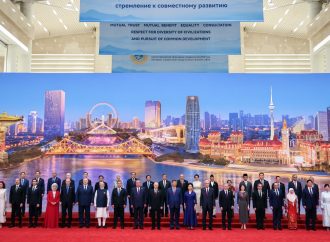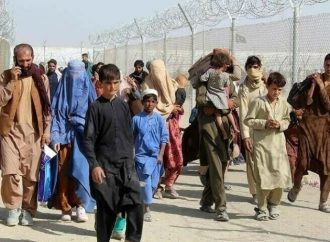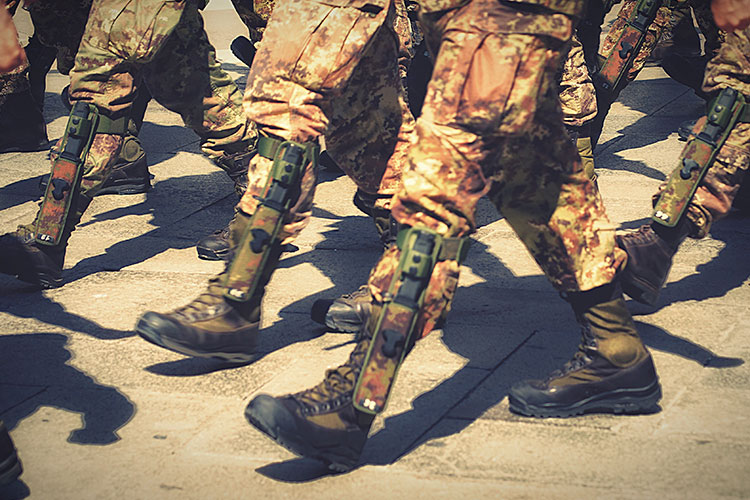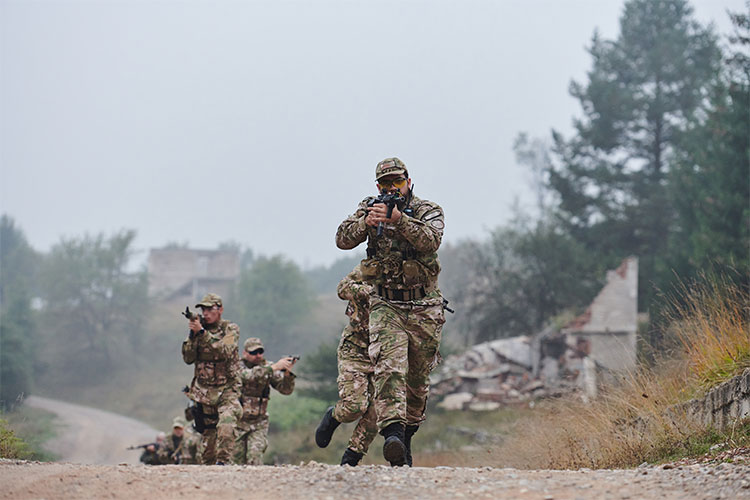Author Recent Posts Rabia Anwaar Latest posts by Rabia Anwaar (see all) Geopolitics and the Future of Gaza: Who Are the Real Stakeholders? – October 15, 2025 Iran’s Nuclear Ambitions and Israel’s Aggressive Dominance in the Region – July 15, 2025 Terrorism and Blame Games: A Barrier to India-Pakistan Normalization – July 15, 2025
The abandoned equipment left in Afghanistan as a result of the abrupt retreat of the U.S. has become a grave threat to not only neighboring states but it is endangering the peace and stability of whole South Asian region. The situation arises out of the unintended consequences of poorly planned military disengagement where weapons meant for allies ended up strengthening adversaries. These military arsenals, which were supposed to be in the hands of the Afghan National Army, have been captured by the interim Afghan government – Taliban and various factions associated with it. This abandonment of advanced weaponry has empowered the Taliban, emboldened extremist groups and heightened security concerns for neighboring countries, particularly Pakistan, Iran and Central Asian states. One of the blatant shipments of these lethal weapons is taking place in its neighboring state Pakistan, through its longest and porous border between both states, the fallout of which is seen explicitly through the recent incident of hijacking of Jaffer Express by a banned terrorist outfit in Baluchistan province of Pakistan.
The weapons are not static in Afghanistan but the terror is transcending beyond its borders for a strengthened collaboration between like-minded factions. The scale of military equipment left behind is staggering. According to official reports, the U.S. supplied the Afghan security forces with an estimated $83 billion worth of military assistance over two decades. The weapons, which were intended for the Afghan National Army, ended up with extremist groups such as the Afghan Interim Government and the Freedom Army of Khorasan (FAK) and currently threaten the stability of the region. Over the two decades of the American presence in Afghanistan, almost 427,300 of America’s arms were supplied to the Afghan National Army, out of which 300,000 of them were left behind with the hurried American withdrawal. Those advanced weapons, such as M4 Carbine rifles, grenades, firearms, armored vehicles, helicopters, drones and sophisticated communication, are being shipped by the FAK to terrorist groups like the Baloch Liberation Army (BLA).
When Kabul fell in August 2021, a large portion of this arsenal fell into Taliban hands. The Pentagon later acknowledged that a significant amount of equipment was left intact however, no effective measures were taken to either disable or retrieve them before the withdrawal. The latest events underscore the gravity of the situation. Pakistani security and customs officials on December 13, 2024, stopped an Afghan vehicle and found a shipment of new American-made weapons hidden in onion sacks. This blatant action reveals the ease with which these weapons are being smuggled across borders to empower terrorism and threaten civilian lives. What could be worse than what is already happening; it has not only strengthened the Taliban’s military capabilities but also became a source of regional instability as they find their way into the hands of other militant groups.
The presence of U.S. military equipment in Taliban hands has fueled tensions with neighboring states especially, Pakistan. The Tehreek-e-Taliban Pakistan (TTP), an offshoot of the Afghan Taliban has significantly escalated its attacks against the state of Pakistan in recent years. It is believed that the Taliban’s access to American weapons has indirectly benefited the TTP through direct transfers across the borders, using illicit ways of transportation. Pakistan witnessed a sharp rise in terrorist attacks in 2023 alone, with more than 2500 civilian and military casualties linked to TTP-related violence. Islamabad has urged the Taliban to curb TTP activity, but Kabul on the face of Pakistan denies its ties with TTP and rather has shown little inclination to confront its ideological allies, exacerbating tensions between the two neighbors.
One of the most shocking incidents that unfolded recently is, the hijacking of Jaffar Express, a train A notable escalation in their modus operandi was observed in the recent hijacking of the Jaffar Express by the BLA. The idea of hijacking a train in the hard terrain of Bolan, stretching three tunnels, would not have materialized without having advanced weaponry and communication systems. This brazen act is another example of misuse of weapons left on Afghan soil which directly threatened the lives of innocent passengers who were held hostage in a prolonged and tense standoff between Pakistan’s security forces and terrorist aides of BLA. The security forces of Pakistan did tremendous and one of its kind acts that effectively neutralized the threat through a decisive counter-operation. However, this incident highlights the pressing need for a comprehensive security framework to preempt such threats in the future.
The proliferation of abandoned U.S. weaponry has also raised alarms among Central Asian republics such as Tajikistan and Uzbekistan. According to official sources, border skirmishes and Taliban-affiliated groups are receiving advanced weapons have unsettled governments in these nations, prompting them to bolster their defense spendings. Russian intelligence agencies have similarly expressed concern over the possibility that some of these weapons could make their way to militant groups operating in the Caucasus or Syria, which could further destabilize conflict zones where Moscow has strategic interests. This indicates that Afghanistan is now serving as an unregulated arms depot, adding security risks to already fragile nations.
Moreover, the triangle of India, Afghanistan and TTP is categorically known, but how Pakistan can overcome and defeat this triangle is a question that needs serious deliberations. Lately, India has been responsible for extra-territorial killings and destabilizing the region through these banned outfits. Not only on Pakistan’s soil but it has also pursued the same strategy on Canadian soil. It could be safe to say that the leftover weapons from the hasty withdrawal of the U.S. are becoming a security threat to South Asia. Despite Pakistan’s repeated attempts of asking the U.S. to take strict action to bring its left weaponry back, the double standards of the U.S. peaks once again by doing nothing in this regard and leaves Pakistan in the lurch, like always.
The situation in Afghanistan serves as a cautionary tale about the dangers of poorly executed military disengagement. The Afghanistan case of the U.S. demonstrates the unintended consequences of leaving behind vast amounts of weaponry in an unstable environment. The lack of a coherent exit strategy has not only strengthened adversaries but also created new security dilemmas for regional actors. One potential solution to this grave problem can be the implementation of stricter post-withdrawal arms control measures. In future conflict zones, the U.S., and other state parties should establish protocols for either reclaiming or disabling military equipment before disengagement. Additionally, there should be greater emphasis on ensuring that local forces receiving military aid have the institutional stability to prevent weapons from falling into hostile hands, otherwise, there will be inevitable mayhem and chaos.
- Geopolitics and the Future of Gaza: Who Are the Real Stakeholders? - October 15, 2025
- Iran’s Nuclear Ambitions and Israel’s Aggressive Dominance in the Region - July 15, 2025
- Terrorism and Blame Games: A Barrier to India-Pakistan Normalization - July 15, 2025






















1 Comment
Noureen Siraj
April 8, 2025, 6:13 amI am proud of you Rabia Anwar
REPLY